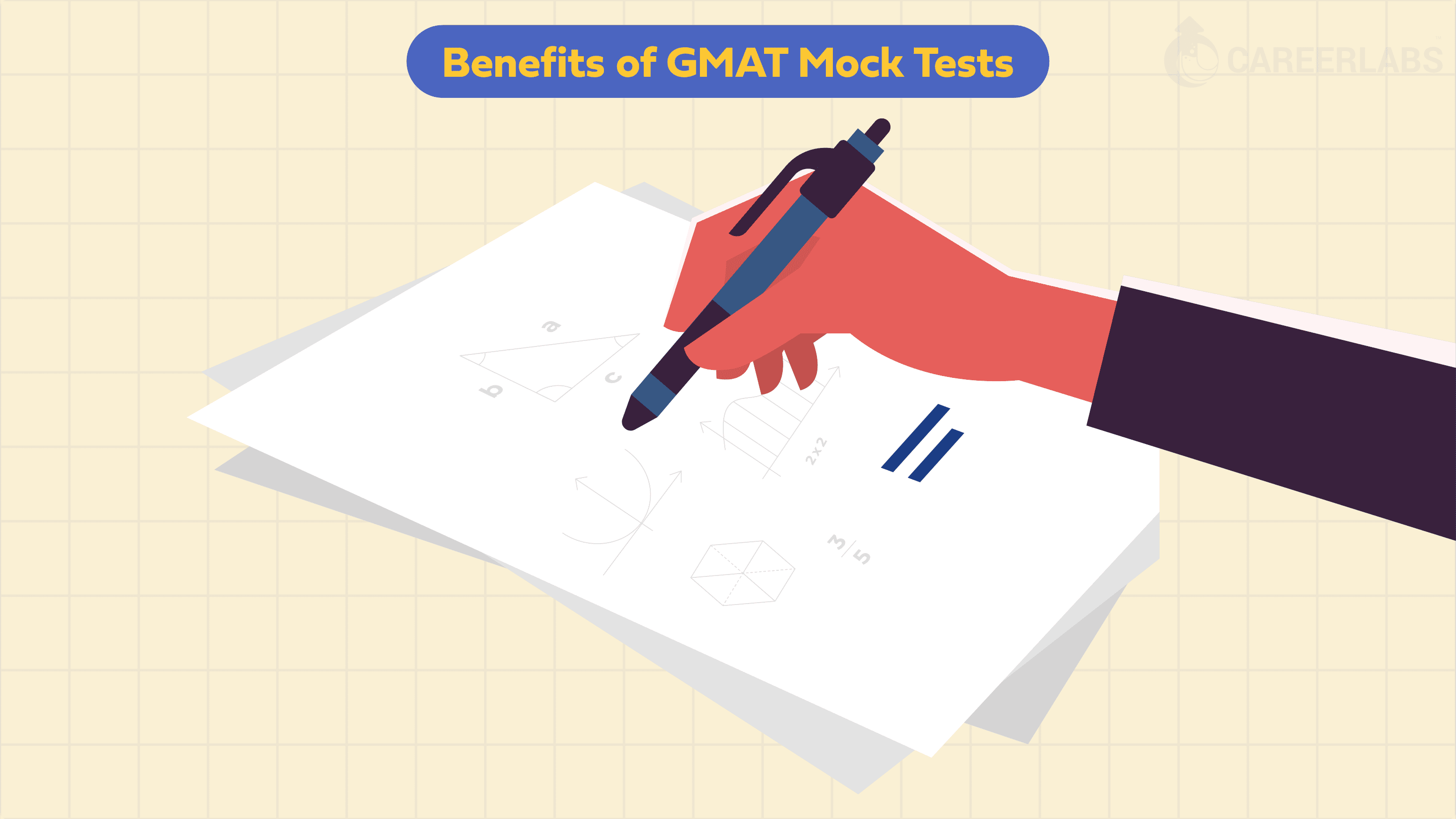GMAT mock tests, commonly known as practice tests, actively contribute to your GMAT preparation process. This is due to the fact that they help you acquaint yourself with the type of questions that might appear in the actual examination. There are plenty of mock tests available online, but it is important to choose only those that resemble the actual GMAT exam in structure and in content. In this article, we will discuss six vital steps to make the most of GMAT mock tests. So, read on!
Things to Keep in Mind While Taking GMAT Mock Tests
Choose the right mock test
The first and most essential step would be to choose the right GMAT mock test. Now you must be wondering what is considered “right”. A right or a good mock test will be identical to the GMAT exam pattern itself, it will have the same amount of sections, questions and subject matter. An easy way to identify legible mock tests would be to head over to the official website, mba.com or to make use of the GMAT official guides available online.
Approach mock tests as though you were writing the GMAT
A lot of test-takers have admitted to us that they take GMAT mock tests casually. This defeats the very purpose of taking mock tests. When you take a mock test, you need to take it with the same discipline and limitations that would be imposed on you if you were writing the GMAT. This means that you take them during the same time of day as your scheduled GMAT exam, but your cell phones must be switched off, you should not take breaks longer than the eight minutes, and any excess time taken must be deducted from the next section.
A mock test taken faithfully is a good indicator of how you will perform on the test day and what scores you can expect. Knowing what scores to expect will help you choose universities or business schools you have a better shot of getting into.
Improve in between the mock tests
Taking mock tests over and over again is useless if you are not working on your weakness after each test. The period between your mock tests is far more important than the frequency at which you take mock tests. The in between period should be used to improve your weak areas and used for revising fundamental concepts.
You must make a note of the questions you encountered that seemed challenging or difficult to tackle. You can work on your weaknesses by going through your notes, recalling the logic you employed for each of those questions and then figuring out where you went wrong by comparing it with the actual solution. If possible, try to record the time you’ve taken to answer each type of question as well – this will help you identify what sort of questions you must focus on and strategise for.
Use mock tests as a tool to track your progress
It is important to note that a high score is not the goal of taking mock tests, rather the goal is to be prepared for the actual exam. While preparing for the exam, try to step out of your comfort zone and challenge yourself. This does not mean to exhaust yourself in the process, but to motivate yourself to perform better with each mock test you take.
A good rule of thumb is to undergo at least 15 mock tests, spread over as many weeks as you would like. In case you are pressed for time, you can take the tests more frequently – but do not take them just for the sake of taking them. Your performance in each test matters more than the number of tests you have taken. Another good trick is to track your progress and scores after each mock test, this will help you gauge how prepared you are for the GMAT.
Use mock tests to fine-tune your approach
Mock tests will help you figure out your strengths and weaknesses. However, after a couple of mock tests, you would have already identified your weak areas. Hence, after attempting these tests a number of times, it would be a good time to come up with an exam strategy. The strategy could include improving your weaker areas first before you move to areas you are more confident about. You could strategise the amount of time you will need for each section, if you feel you need longer for a particular section, you can plan to finish the other sections quickly. Strategising will ensure that you do not pressure yourself while answering the sections/questions you’ve already identified as challenging.
Avoid taking too many tests
Preparation fatigue is very real and can typically strike in the last few days leading to the test. It can destroy your focus, your approach and might even disturb your state of mind. This can even lead you to forgo your strategy or even freeze. Therefore, it is essential to spread out the last few mock tests so that you do not appear to the actual GMAT exam feeling exhausted.
Do not make the mistake of taking the mock test a day before the actual examination, because if you do not achieve your target score then this could demotivate you to a great extent. Instead, the last mock test you should take should be at least a week or more before the exam date as you still have time to work on areas you are struggling with. Taking too many tests, one after the other can also overwhelm you a lot and you don’t want it to add to the exam stress you are already dealing with.
Now that you know how to efficiently make use of your GMAT mock tests, you can incorporate these steps into your preparation process for optimal results. It will also make your GMAT preparation process a lot easier.
